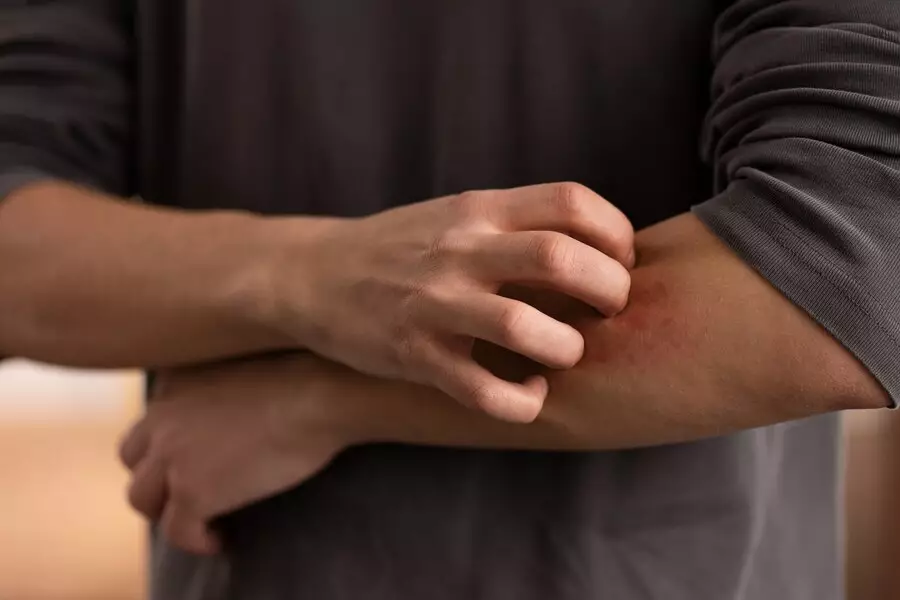Brilio.net - The habit of exchanging clothes with other people actually carries dangers that many people are not aware of. Reporting from Antara News, skin health expert from the National Central General Hospital, Dr. Cipto Mangunkusumo, dr. Wresti Indriatmi, Sp.KK(K), warned that frequently changing clothes could cause the transmission of fungal infections such as ringworm.
Changing clothes, especially ones that have been worn, increases the risk of exposure to various microorganisms that cause skin diseases. It was further explained that the fungus that causes ringworm can survive in clothing fibers for some time. When the clothes are worn by someone else, this fungus has the opportunity to infect new skin.
Even though it sounds trivial, the impact of this habit can be quite serious. Fungal infections such as ringworm not only cause itching or discomfort, but can also spread to other parts of the body if not treated properly. Therefore, it is important for public awareness of the health risks of this habit of exchanging clothes.
It is important to know that apart from causing ringworm, frequently changing clothes also causes several other skin diseases. What are the dangers of disease if you frequently change clothes? Come on, see the complete review below! Monday (30/7).
Danger of disease if you exchange clothes with other people.

photo: freepik.com
1. Tinea corporis (body ringworm)Tinea corporis, or better known as body ringworm, is a fungal infection that attacks the skin of the body. This disease is caused by dermatophyte fungi, especially from the genera Trichophyton and Microsporum.
The main symptom of tinea corporis is a circular red patch with more prominent edges and a paler center. These patches are usually itchy and can spread if left untreated.
Research conducted by Havlickova et al. (2008) in the journal Mycoses shows that dermatophyte fungi can survive on clothing fibers for up to 1-2 weeks, depending on humidity and temperature conditions.
Therefore, changing clothes, especially those that are damp or sweaty, greatly increases the risk of transmitting tinea corporis because the fungus that causes it can survive in the fibers of clothing.
2. Tinea cruris (groin ringworm)The next danger is tinea cruris. Or what is better known as groin ringworm is a fungal infection that attacks the groin area, inner thighs and sometimes the buttocks.
This contagious fungal infection is also caused by dermatophyte fungi. The symptoms are similar to tinea corporis, but the location is specific to the moist skin folds. Changing underwear or frequently wearing tight pants can increase the risk of transmitting tinea cruris, especially if the clothing is damp or unclean.
It is further explained in research published in the Journal of the American Academy of Dermatology (2014) by Gupta et al. shows that the recurrence rate of tinea cruris can reach 20-25% within 12 months after treatment, especially in people who are reluctant to keep their bodies and clothes clean.
3. Cutaneous candidiasisCutaneous candidiasis is a fungal infection of the skin caused by Candida species, especially Candida albicans. This infection often occurs in moist skin folds such as the armpits, breast folds and groin.
Symptoms include a red, itchy rash, and sometimes accompanied by small blisters. One of the dangers of frequently changing clothes, especially those that absorb sweat such as sportswear, can increase the risk of transmitting cutaneous candidiasis. So, it shouldn't be underestimated.

photo: freepik.com
4. Pityriasis versicolor (Tanu)The next danger of disease caused by frequently changing clothes is tinea versicolor. Or in medical language it is known as pityriasis versicolor.
Pityriasis versicolor is a fungus caused by Malassezia furfur. This disease is characterized by patches that are lighter or darker than normal skin color, usually on the chest, back and arms.
Even though it seems normal, tinea versicolor really disturbs a person's appearance. It even creates an unpleasant stigma for the sufferer. These tinea versicolor spots can itch, especially when you sweat.
When you often change clothes with the sufferer or wear other people's clothes, especially in hot or humid environments, this can most likely increase the risk of transmitting pityriasis versicolor.
5. Scabies (Scabies)The next danger is the threat of scabies. Although not caused by fungus, scabies can also be transmitted through exchanging clothes.
This disease is caused by the Sarcoptes scabiei mite which digs tunnels under the skin. Symptoms include intense itching, especially at night, and small rashes that resemble pimples or blisters.
When you exchange clothes with another person, without realizing that he or she is suffering from scabies, there is a big possibility that you will also contract this disease. Moreover, wearing clothes for a long period of time can cause infection.
6. Pediculosis corporis (body lice)Pediculosis corporis or body lice infestation can also be transmitted through changing clothes. These lice live and lay their eggs on clothing, especially on parts that are in direct contact with the skin.
Symptoms include intense itching and red spots on the skin due to flea bites. Exchanging clothes with someone infested with body lice carries a high risk of infection.
7. Contact dermatitisFinally, there is the risk of transmitting contact dermatitis. This type of disease can occur due to changing clothes. This condition occurs when the skin reacts to chemicals or irritants that may be in other people's clothes, such as detergent, fabric softener, or perfume. Symptoms include a red, itchy rash, and sometimes accompanied by swelling or blisters.
(brl/lea)